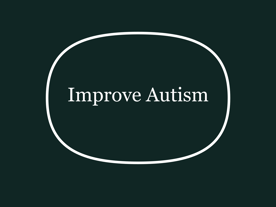The ScanBrit randomised, controlled, singleblind study of a gluten- and casein-free dietary intervention for children with autism spectrum disorders
Authors:
Whiteley, P., Haracopos, D., Knivsberg, A.M., Reichelt, K.L., Parlar, S., Jacobsen, J., Seim, A., Pedersen, L., Schondel, M. and Shattock, P.
The ScanBrit study, published in Nutritional Neuroscience in April 2010, was a two-stage, 24-month, randomized, controlled, single-blind trial investigating the effects of a gluten- and casein-free diet (GFCF) on children with autism spectrum disorders (ASD). Conducted in Denmark from April 2006 to October 2008, the study involved 72 children aged 4 to 10 years 11 months, diagnosed with pervasive developmental disorder (PDD) per ICD-10 criteria. The study used an adaptive "catch-up" design with interim analysis, assessing core autism behaviors, developmental levels, and attention-deficit hyperactivity symptoms using standardized tools like the Autism Diagnostic Observation Schedule (ADOS), Gilliam Autism Rating Scale (GARS), Vineland Adaptive Behaviour Scales (VABS), and Attention-Deficit Hyperactivity Disorder-IV (ADHD-IV) scale.
Key Findings:
Participant Numbers and Attrition:
Initial Enrollment: 72 children were randomized into two groups: Group A (diet, n=38) and Group B (non-diet, n=34).
Stage 1 (12 months): 15 children (21%) dropped out (11 from Group A, 4 from Group B). Data analysis included 26 diet and 29 non-diet participants at 12 months.
Stage 2 (24 months): 35 participants remained (18 from Group A, 17 from Group B).
Results of Stage 1 (0-12 months):
At 8 months, no significant changes were noted for the diet group (P<0.01 threshold), but ADOS communication scores showed significant improvement (P=0.0022) for the diet group, though this was not available for the interim stop-go decision.
At 12 months, the diet group showed significant improvements (time*treatment interaction) in:
GARS social interaction (P=0.0001)
ADHD-IV inattention (P=0.0007)
ADHD-IV hyperactivity (P=0.0188)
The non-diet group showed a significant effect in VABS daily living skills (P=0.0208), possibly due to changes in test administration.
These results surpassed predefined statistical thresholds, leading to Group B being reassigned to the GFCF diet for the next 12 months.
Results of Stage 2 (12-24 months):
Analysis was conducted on 35 remaining participants using three scenarios:
Scenario 1 (pooled data): Significant improvements were observed in ADOS communication (P=0.0021), ADOS repetitive behavior (P=0.0212), GARS social (P=0.0003), GARS communication (P<0.0001), GARS stereotyped behavior (P<0.0001), VABS social (P=0.0248), ADHD-IV inattention (P=0.0003), and ADHD-IV hyperactivity (P=0.0047).
Scenario 2 (Group B cross-over): Significant improvements in GARS communication (P=0.0269), GARS stereotyped behavior (P=0.0174), and ADHD-IV hyperactivity (P=0.0148).
Scenario 3 (Group A alone): Significant improvements in GARS social (P=0.0025) and GARS communication (P=0.0019).
Improvements were more pronounced in Group A, but Group B showed some gains after starting the diet. A plateau effect was suggested for Group A after 12 months, with less dramatic changes from 8 to 24 months.
Time to Symptom Improvement:
Significant improvements in the diet group were evident at 8 months for ADOS communication and became more pronounced by 12 months across multiple measures (GARS social, ADHD-IV inattention, and hyperactivity). The study suggests medium-term efficacy (8-12 months) with potential sustained benefits up to 24 months, though some effects may plateau after 12 months.
Additional Observations:
No significant adverse effects were reported, though some participants initially struggled with food acceptance, which resolved early.
The study lacked a placebo condition, so non-dietary intervention effects (e.g., caregiver expectations) could not be ruled out.
Urine analysis for opioid peptides and related compounds was conducted but reported separately, potentially linking to mechanisms like the opioid-excess theory.
Conclusions:
The study suggests that a gluten- and casein-free diet may positively impact core and related behaviors in some children with ASD, particularly in social interaction, communication, inattention, and hyperactivity, with significant improvements observed by 8-12 months. However, the plateau effect and variability in response highlight the need for further research to identify best responders and potential biological mechanisms. The authors emphasize the importance of nutritional support to mitigate risks of dietary restriction and call for additional studies on long-term safety and efficacy.
https://pubmed.ncbi.nlm.nih.gov/20406576/
doi: 10.1179/147683010X12611460763922


